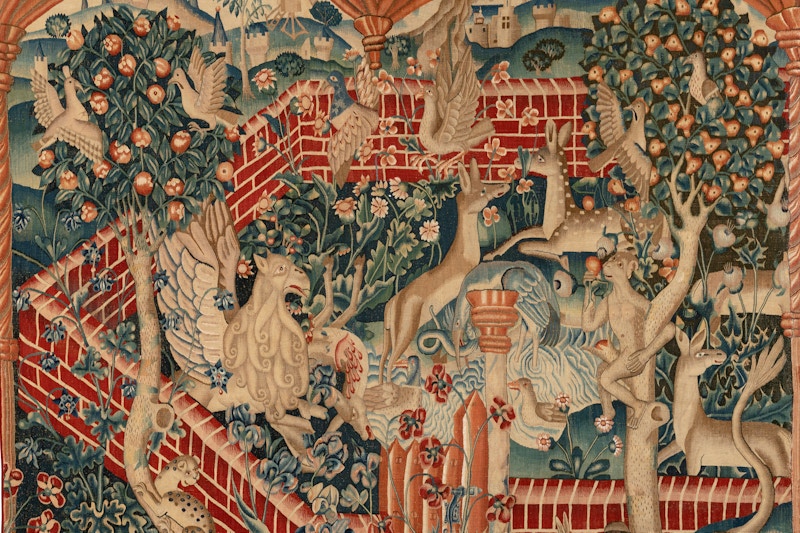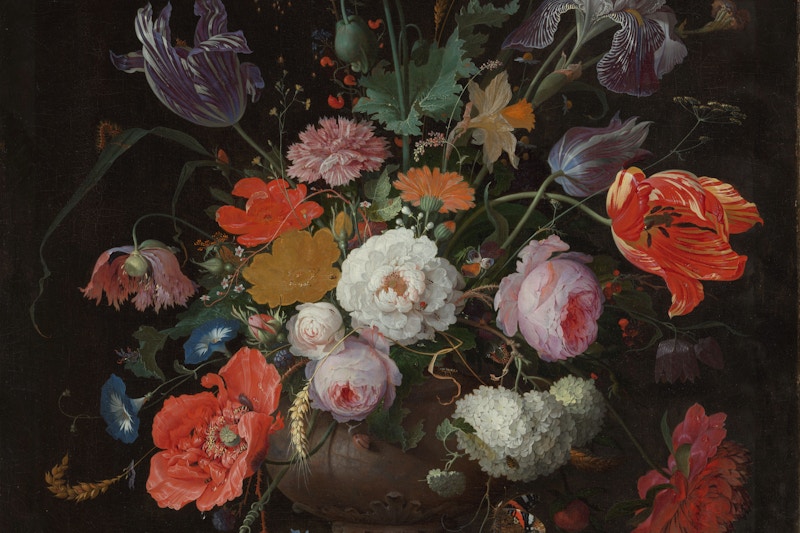
TAFETA Founder Ayo Adeyinka on Bringing Modern African Art to the Market
Adeyinka shares the story behind his gallery and contemporary artists to know
- By TEFAF Editors
- Meet the Experts
Following a career in finance, Ayo Adeyinka founded TAFETA, a London-based gallery and project space in Lagos specializing in 20th-century and contemporary African art. Here, he shares how he transitioned to the art world, the philosophy behind TAFETA, and his view on the market for modern and contemporary African art.
You opened your gallery in London in 2013. However, you come from a different background, namely the financial world. How did the transition to art consulting and the founding of TAFETA happen? Was there a specific influence that steered you to pursue the art world?
My introduction to the art world was as a collector. Younger and quite enthusiastic about artists of African origin, my interest led me to consume a vast amount of literature on the earlier 20th-century studio artists and their more contemporary peers. My setting up as a gallerist is a culmination of finding out that my true passion lies in the arts, a deeper knowledge of the wider market, and a more attuned background to running a successful business. Of course, there were family and friends who encouraged me to follow my passions, and thankfully some of my early cheerleaders are now long-term collectors.
Why did you decide to specialize in contemporary African art?
Being of Nigerian descent, I was primarily driven by seeking a deeper connection with my artistic heritage. We at TAFETA believe very strongly that cultural output from the African continent has and continues to be of significant importance to a richer cultural landscape for all. The continent and its diaspora have a long history of artistic production, and we strive to continually create a bridge between the earlier classical output and its contemporary manifestations.

Could you tell us more about the different areas you cover as a dealer? Modern and contemporary African art is a broad term, combining many different cultures and mediums. Did you see gaps in the market that you wanted to strengthen and give emerging artists a platform and more exposure?
Our focus as a gallery is on 20th-century and contemporary African arts. When we started, it was more of a passion project, and we were always blessed with a loyal collector base. You can say the rest of the market caught on over the years. The contemporary African art market is now quite vibrant, but one gap that still exists is proper institutional attention being given to early- and mid-20th-century studio artists from the African continent. This is one area we are now actively focused on. We recently opened an exhibition of Bruce Onobrakpeya’s works, a pioneer of post-independence art in Nigeria, and a leading figure in synthesizing the cultural and aesthetic tradition of his heritage with the imported art techniques of the time.
How would you describe your focus and the philosophy behind your gallery?
Apart from our active secondary market in African modernism, the gallery also works closely with a select group of talented contemporary artists who we provide the full range of gallery support and help to build long term sustainable careers. With this group of artists, there is a bit of nurturing and a lot of explaining to collectors their practice and aspirations. Placing these artists with the right kind of private, corporate, and institutional collections is an objective a place like TEFAF Maastricht helps us achieve.
Your first participation at TEFAF was through Showcase in 2020. What was your idea behind your stand and the works you brought to the fair?
Being our first opportunity to show at TEFAF, we decided to showcase two young contemporary artists whose works were inspired by classical African aesthetics. This worked perfectly as we knew that the TEFAF audience was more familiar with ethnic art from the continent. Works by the artists, Niyi Olagunju, and Babajide Olatunji, were very well received, and relationships developed at the fair have led to Olagunju’s work being acquired by a Brussels-based institution: The House of European History.

"We at TAFETA believe very strongly that cultural output from the African continent has and continues to be of significant importance to a richer cultural landscape for all. The continent and its diaspora have a long history of artistic production and we strive to continually create a bridge between the earlier classical output and its contemporary manifestations." — Ayo Adeyinka

What is your perspective on the current market for contemporary African art? How has is it evolved?
There is certainly more visibility, and the increased market interest has led more established galleries to add a few more contemporary African artists to their roster. In the auction market, there is also a bit more of a mainstreaming going on.
And how do you think it will develop? Are there any trends you can foresee for the future?
Trends are hard to predict in the art market, but as a gallery we are keen on more critical institutional analysis of who the important artists are from a historical perspective. We also foresee a future where the canon starts to recognize that there are multiple art historical trajectories and museum collections begin to reflect this.
Who are some of the contemporary African artists that impress you the most, and why?
El Anatsui—not only for the sheer beauty of his contemporary works but also because he was one of the post-independence artists who contributed to a new way of thinking about visual arts on the continent. Yinka Shonibare CBE for his ability to collapse the political and playful–the past, present, and future–in a single body of work. Yinka has a large retrospective which recently opened at the Museum der Moderne, Salzburg. On the younger end of the scale, we also love Lynette Yiadom-Boakye’s figurative paintings.

What is your view on the momentum and development of African contemporary art in the global art market during the pandemic?
One area that the pandemic seems to have accelerated is global online interconnectivity. Galleries, curators, and collectors now seem to be only one Instagram message away from any artist on the African continent, especially the younger ones. The artists themselves also seem to be constantly plugged into global trends.
What strategies have you devised to give contemporary African art a platform during the past year?
Six for Six was an idea we initiated during the early days of the pandemic. The premise is simple: the gallery will send up to three artworks at a time to a prospective collector, who can live with them for up to six weeks. If the collector decides to buy, payment can be arranged in a series of installments over six months. The idea has proven quite popular and is here to stay.


